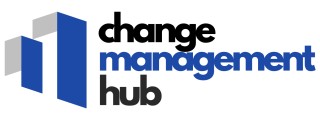-large-teaser.webp)
Understanding the Kaizen Board
Exploring the Kaizen Board Concept
In the dynamic world of change management, the Kaizen board stands out as a powerful tool that champions continuous improvement. This concept, rooted in lean manufacturing principles, offers a visual representation of progress and fosters an atmosphere of operational excellence. But what exactly is a Kaizen board? At its core, a Kaizen board is a visual management tool designed to capture ongoing improvement efforts within a team or organization. Much like a kanban board, it helps teams monitor the status of various initiatives in real time. These boards, which can be magnetic or dry erase, are commonly used to drive continuous improvement by illustrating tasks’ progress and identifying bottlenecks quickly. Key components of a Kaizen board typically include:- Improvement Ideas: A dedicated spot for team members to add suggestions, ensuring everyone's voice is heard.
- Current Status: A section that reflects the present stage of various initiatives, fostering transparency.
- Performance Assessment: Regularly updated to monitor performance metrics and their alignment with improvement process goals.
- Visual Cues: Designed to highlight areas that need attention, helping teams to visually prioritize tasks.
Benefits of Using a Kaizen Board in Change Management
Maximizing Efficiency through Visual Management
In the arena of change management, leveraging a Kaizen board can significantly improve your team’s efficiency by providing a comprehensive visual management system. These boards serve as a powerful tool to track progress, highlight areas for improvement, and ensure the continuous involvement of all team members. With their visual nature, Kaizen boards facilitate communication and foster a shared understanding of the status of various projects.- Enhanced Team Collaboration: By adding team members to the board, it empowers them to identify issues and propose solutions collectively. This fosters an environment of collaborative improvement efforts and problem-solving.
- Real-Time Progress Tracking: As tasks are added to the board, team members can visually track the progress of each task in real time, understanding whether they are on track or if adjustments are needed. This enhances the board’s role in visual management.
- Lean and Mean: The use of Lean principles, such as kanban, aligns perfectly with Kaizen boards. These boards act as a magnetic adhesive, connecting team efforts towards common goals of process improvement and continuous enhancement.
- Continuous Improvement: At its core, Kaizen is about driving continuous operational excellence. These boards are a key tool in visually reinforcing a culture of ongoing improvement within your organization.
Setting Up Your Kaizen Board
Creating an Effective Kaizen Board Setup
Setting up a Kaizen board is a pivotal step in driving continuous improvement within your organization. A well-structured board not only facilitates visual management but also enhances team collaboration and problem-solving efforts. Here’s how you can effectively set up your Kaizen board to maximize its potential.
Choosing the Right Board
Begin by selecting a board that suits your operational needs. Options range from magnetic dry-erase boards to digital kanban boards. The choice depends on your team’s preference and the nature of your processes. A physical board offers a tangible, visual representation of progress, while digital boards provide real-time updates and remote accessibility.
Designing the Layout
Once you have your board, design a layout that clearly displays the stages of your improvement process. Typically, a Kaizen board includes columns for ideas, in-progress tasks, completed tasks, and performance metrics. This layout helps team members visually track the status of each improvement effort, fostering a culture of transparency and accountability.
Adding Key Elements
- Headers: Clearly label each column to define the stages of your process.
- Cards: Use cards or sticky notes to represent tasks or improvement ideas. Ensure they are easily movable to reflect progress.
- Indicators: Add visual indicators such as color codes or symbols to highlight priority tasks or bottlenecks.
Integrating with Existing Processes
To ensure seamless integration, align your Kaizen board with existing lean manufacturing practices or other process management tools. This alignment helps in maintaining consistency and enhances the board’s effectiveness in driving continuous improvement. For more insights on aligning improvement tools, explore navigating the path from sourcing to settlement.
Engaging the Team
Engage your team members in the setup process to foster ownership and commitment. Encourage them to contribute improvement ideas and participate in regular board reviews. This engagement not only boosts morale but also enhances the board’s role in achieving operational excellence.
Engaging Your Team with the Kaizen Board
Nurturing Team Engagement with Your Kaizen Board
Engaging your team in the continuous improvement process using a kaizen board is a crucial step. The visual management capabilities of these boards can help your team visualize progress, set goals, and stay motivated. Here are some effective strategies to keep your team members actively engaged:- Foster an Inclusive Environment: Encourage participation from all team members in the problem solving and improvement process. This inclusivity not only boosts morale but also brings diverse perspectives to the table, driving continuous improvement in a holistic manner.
- Emphasize Clear Communication: Kaizen and kanban boards are visual tools, but it's essential to supplement them with regular discussions. These discussions ensure that the status and progress of tasks are clear to everyone, maintaining momentum and clarity in objectives.
- Utilize Visual Elements: Incorporate colorful markers and magnetic adhesive tools on your kaizen board to make the process visually engaging. Such tools can make it easier for team members to follow through on tasks and track performance in real time.
- Cultivate Ownership and Responsibility: Assign specific areas of the board to team members, giving them a sense of ownership. This drives personal responsibility, encouraging team members to contribute actively to their specific tasks or sections.
- Celebrate Small Wins: Recognize and celebrate the achievement of milestones highlighted on the board. Positive reinforcement bolsters team morale and reinforces the value of continuous improvement efforts.
Overcoming Challenges with the Kaizen Board
Identifying and Addressing Challenges in Real Time
One of the common hurdles in leveraging a kaizen board is ensuring the entire team understands its value and purpose. Engaging team members with a tool that might initially seem complex requires strategic onboarding and training. It helps to start with sessions where practical use cases are demonstrated, displaying how kaizen boards drive continuous improvement. For boards that operate in real time, progress tracking becomes smoother, offering a clear visual representation of operational excellence at any given moment.
Dealing with Resistance to Change
Resistance is another challenge many teams face when integrating kaizen practices into their workflow. To overcome this, it's important to show how the board supports individual and collective performance improvement. Encouraging team members to contribute improvement ideas can transform resistance into engagement, by adding value to their roles in the change management process.
Leveraging Visual Management for Ongoing Engagement
Incorporating visual management tools helps in making the kaizen board an integral part of daily operations. Using magnetic adhesive icons or different colored dry-erase markers can highlight areas in need of attention, track ongoing projects, and assign tasks – keeping team members aware of their status in a visually engaging manner. A magnetic board setup supports easy updates and modifications, helping to maintain an up-to-date improvement process.
Fostering a Lean Manufacturing Mindset
Another challenge is fostering a lean manufacturing mindset where team members constantly seek process simplification. It's crucial to explain how kaizen boards, alongside kanban boards, simplify the identification of bottlenecks and streamline workflows. By driving a continuous improvement culture, team members are more likely to buy into the lean process, ensuring broader acceptance and integration of the kaizen board as a tool for problem-solving.
Measuring Success with the Kaizen Board
Assessing the Impact Using Key Metrics
To truly understand the success of your kaizen board in a change management context, you need to focus on metrics. Measuring success begins with identifying the key performance indicators (KPIs) relevant to your improvement process. This could range from operational efficiency to team engagement levels.- Visual Monitoring: Utilizing the visual management aspect of a kaizen board allows teams to track the status of ongoing improvements in real time. This aids in identifying which processes are advancing smoothly and which ones require more attention.
- Performance Metrics: Establish performance baselines before implementing any changes using the board. Compare these baselines against post-improvement metrics to evaluate tangible results.
- Engagement Levels: People are at the heart of change management. Monitor the engagement of team members through their participation in the board's activities.
Leveraging Visual Management for Instant Insights
A key strength of a kaizen board is its ability to visually represent the progress of change initiatives. This visual format simplifies the process of understanding complex data, enabling quick decision-making.- Magnetic Adhesive Boards: These boards can be used to add or remove elements as needed, keeping the improvement ideas in clear view for all stakeholders.
- Status Updates Across Teams: With kanban boards, the process of shifting tasks through different stages becomes more intuitive, assisting team members in understanding their roles in the improvement efforts.
Evaluating Challenges and Successes
Analyze both the achievements and the difficulties encountered during the process. Lean manufacturing principles highlight the importance of learning from both successes and obstacles encountered. This reflection process helps in driving continuous improvement.- Problem Solving: Use the board to facilitate discussions around problem-solving strategies, fostering a team-centered approach to overcoming obstacles.
- Operational Excellence: Finally, strive for operational excellence by continuously aligning the kaizen board goals with the broader objectives of your organization.













